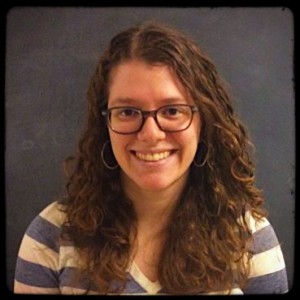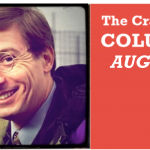Atomic Size Matters–a doctoral thesis in comic book format
Atomic Size Matters (probably) represents the first doctoral thesis ever which is presented in a special comic book version. Veronica Berns, structural chemist from University of Wisconsin-Madison, wanted to make sure that her family and friends understood her research about quasicrystals.
Hi Veronica! Tell us about the Atomic Size Matters comic and how you got the idea!
 When I was about a year away from graduating, I started thinking about how I would talk to my family about my work. It was a big accomplishment for me, and I wanted them to understand why. Since none of my relatives are chemists, I had to find some way to translate the excitement of doing cutting edge science without using the foreign language of science. Ever since I was little, my dad and I always did a lot of drawings, just to make each other laugh. We’re both big fans of comics, so it made sense to pair the words with funny little drawings in a comic book form. The book is intended to feel like a conversation with me, with a few sketches thrown in.
When I was about a year away from graduating, I started thinking about how I would talk to my family about my work. It was a big accomplishment for me, and I wanted them to understand why. Since none of my relatives are chemists, I had to find some way to translate the excitement of doing cutting edge science without using the foreign language of science. Ever since I was little, my dad and I always did a lot of drawings, just to make each other laugh. We’re both big fans of comics, so it made sense to pair the words with funny little drawings in a comic book form. The book is intended to feel like a conversation with me, with a few sketches thrown in.

Why should your comic concern the young scientist?
One challenge that all scientists face today is communicating our work to the general public. It is important now more than ever, for people to understand what and how we can learn about the world around us. I think young scientists really get this. Fortunately, it is easier than ever to talk about complicated ideas in a variety of media, and I think this generation of new STEM experts is ready to change the conversation around science.
Give three pieces of advice to the science or tech person who wants to use comics to disseminate science!
Three pieces of advice! One thing I should clarify, is that comics aren’t everyone’s thing. The same idea and goal can be accomplished in all kinds of forms, be it a song, or a youtube video, or a great blog post. Any new way to have a conversation and engage with someone is valid! Find your own way to do it, and it will be great!
But if comics are your thing too, here’s a few pointers:
1) Keep it simple. A good story unfolds one idea at a time. Trying to say too many things at once makes for a confusing story.
2) Don’t be afraid of using jargon… just define your terms.
3) Have a little fun with it! Bring in humor where you can! If you’re having a good time writing it, your readers will have fun reading it!
- Claire Price of Crastina receives outreach award from Royal Society of Biology - October 25, 2020
- Agile Science student project at Brussels Engineering School ECAM: “We can’t wait to try it again!” - August 28, 2020
- Create an infographic in the Lifeology SciArt Infographic Challenge - June 16, 2020
- Adam Ruben – The scientist that teaches undergraduate students comedy - March 27, 2020
- Sam Gregson, Bad Boy of Science: “Comedy helps to bridge the gap” - March 10, 2020
- The Coolest Science Merchandise of 2019 - December 16, 2019
- Science Media Centre (UK) offers guide on dealing with online harassment in academia - November 26, 2019
- Agile project management taught to students and researchers at Karolinska Institutet - September 20, 2019
- Stefan Jansson: Improve your credibility! (Crastina Column, September 2019) - September 6, 2019
- The People’s Poet: Silke Kramprich, tech communicator - August 31, 2019






Leave a Reply
Want to join the discussion?Feel free to contribute!